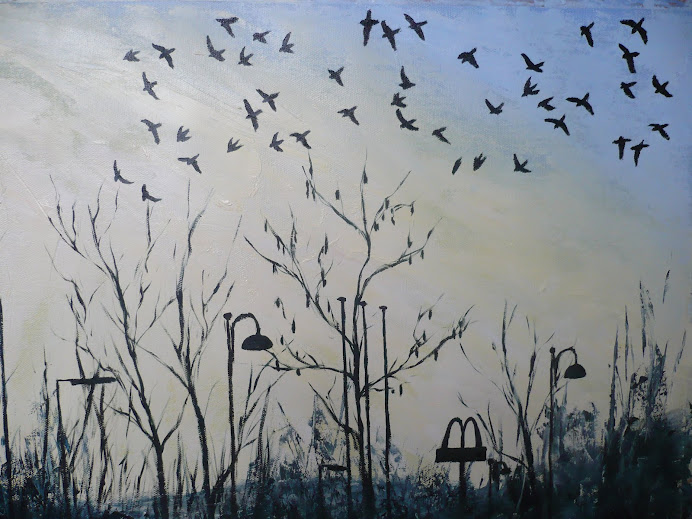Having previously never understood Patrick Heron's colourful pictures, I've now fallen in love with them after having seen a large painting by him down in the Tate St Ives. It filled my vision with colour, texture and movement. Since then I've tried to find out more about him and how he worked, so I enjoyed this book about him by Michael McNay and I'll include some passages here that caught my interest.
This first passage is in Heron's own words, about his work, which he wrote about in the essay "Art is Autonomous" written in 1955 and is quoted in the book on page 51. "The meaning which a work of art has for society is not the same as the meaning that the artist was conscious of putting into it. This is because art is not just a telephone exchange which facilitates straightforward communication. The work of art is in some profound sense an independent, live entity. It has its own life. It draws nourishment from its creator that he was totally unaware of having put into it: and it redistributes nourishment to the spectator (including the artist himself, for he is merely a spectator once the work is completed)"
Later, on page 52 he goes on to describe the process of building up a painting using shapes and brushstrokes, almost abstract in a way, that goes into an object, that the viewer knows is an illusion, echoing the work of EH Gombrich in his book "Art and Illusion", but like the greatest magic tricks, we love to be deceived by. He gave this lecture at the University of Texas in 1979. "Even in the most highly figurative of masterpieces the painter knows that it is not Rembrandt's mothers nose he is looking at, but a miraculously ordered mosaic of interleaved, overlapped, opaque, transparent, soft-edged, sharp-edged, rounded or squared, separate brush-touches....A painting's greatness, or otherwise, doesn't depend on that information about the nostril (or about any other of the myriad subjects available): it depends upon the organisational significance, harmony, architectonic coherence - or whatever else you like to call it that those paint marks across that flat surface evoke."
During this trip to Texas he became very ill with pneumonia, and his wife died shortly afterwards. For a while he didn't paint at all, then he started to draw, using a very minimalist, representational style that he'd previously experimented with in 1954. This minimalist style of drawing later found its way into his paintings of the 1990s. The book describes this on page 64 in a very interesting way; "And the whites in Heron's drawings, that pregnant emptiness full of suggested light and colour, seem to look forward to the white expanses of primed canvas he would leave on his final paintings, between the carefree filigree of the scribbled lines of paint."
In an essay on Constable by Heron, entitled "Constable: Spatial Colour in the Drawings" written in 1994, Heron goes into more detail about the illusionistic impression of depth that is created in drawings which is mentioned on page 64; "at every stage in our contemplation of a drawing we are measuring the various depths to which our eyes sink into the illusionistic space the drawing evokes: thirty yards to that tree - seventy yards to that bank, two hundred yards to that hedge - eight-five yards to that gable-end - five miles to that cloud - stop; stop; stop; the eye plunges straight ahead through the illusionistic space of the drawing, down a hundred lines of vision to a 'stop'."
It is not surprising that Heron's primary consideration in his paintings was colour. On page 65 the book mentions that "Patrick equated the spiritual with the continent of colour, better than sex, he said, better than anything as a matter of fact. 'All colour is shape and all shape is colour' he wrote. 'There is no shape that is not conveyed to you by colour, and there is no colour that can present itself to you without involving shape." This suggests that he had a language of shapes and colours that was very personal to him, like a code.
On page 67 it mentions that to the younger generation of artists "Heron was a link with the masters, particularly Braque and Matisse in France; and like Heron, like Matisse's British contemporary Matthew Smith, had not painted out of a sense of inferiority but had set out to learn from the old masters of modernism and match them."
Along side this love of colour was a belief which he had written about many times, "that he believed that figuration would return to painting in a different form," but that "finding parallels in nature was not what Heron meant when he had remarked that figuration would return." He died in 1999, the day after he'd created a series of drawings, based on the map of Australia, that were to be turned into etchings. He was 79 years old, and had pursued the puzzle, the joy and struggle of art until his death.

No comments:
Post a Comment